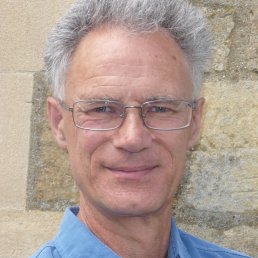Oxford Mathematician Linus Schumacher has won the prestigious Reinhart Heinrich Doctoral Thesis Award. The award is presented annually to the student submitting the best doctoral thesis in any area of Mathematical and Theoretical Biology.
14:15
K-contact & Sasakian manifolds of dimension 5
Abstract
Sasakian manifolds are odd-dimensional counterparts of Kahler manifolds in even dimensions,
with K-contact manifolds corresponding to symplectic manifolds. It is an interesting problem to find
obstructions for a closed manifold to admit such types of structures and in particular, to construct
K-contact manifolds which do not admit Sasakian structures. In the simply-connected case, the
hardest dimension is 5, where Kollar has found subtle obstructions to the existence of Sasakian
structures, associated to the theory of algebraic surfaces.
In this talk, we develop methods to distinguish K-contact manifolds from Sasakian ones in
dimension 5. In particular, we find the first example of a closed 5-manifold with first Betti number 0 which is K-contact but which carries no semi-regular Sasakian structure.
(Joint work with J.A. Rojo and A. Tralle).
Quantum corrections to Hawking radiation
Abstract
Black holes are one of the few available laboratories for testing theoretical ideas in fundamental physics. Since Hawking's result that they radiate a thermal spectrum, black holes have been regarded as thermodynamic objects with associated temperature, entropy, etc. While this is an extremely beautiful picture it has also lead to numerous puzzles. In this talk I will describe the two-loop correction to scalar correlation functions due to \phi^4 interactions and explain why this might have implications for our current view of semi-classical black holes.
Input-independent, optimal interpolatory model reduction: Moving from linear to nonlinear dynamics
Abstract
For linear dynamical systems, model reduction has achieved great success. In the case of linear dynamics, we know how to construct, at a modest cost, (locally) optimal, input-independent reduced models; that is, reduced models that are uniformly good over all inputs having bounded energy. In addition, in some cases we can achieve this goal using only input/output data without a priori knowledge of internal dynamics. Even though model reduction has been successfully and effectively applied to nonlinear dynamical systems as well, in this setting, bot the reduction process and the reduced models are input dependent and the high fidelity of the resulting approximation is generically restricted to the training input/data. In this talk, we will offer remedies to this situation.
Estimating the Largest Elements of a Matrix
Abstract
In many applications we need to find or estimate the $p \ge 1$ largest elements of a matrix, along with their locations. This is required for recommender systems used by Amazon and Netflix, link prediction in graphs, and in finding the most important links in a complex network, for example.
Our algorithm uses only matrix vector products and is based upon a power method for mixed subordinate norms. We have obtained theoretical results on the convergence of this algorithm via a comparison with rook pivoting for the LU decomposition. We have also improved the practicality of the algorithm by producing a blocked version iterating on $n \times t$ matrices, as opposed to vectors, where $t$ is a tunable parameter. For $p > 1$ we show how deflation can be used to improve the convergence of the algorithm.
Finally, numerical experiments on both randomly generated matrices and real-life datasets (the latter for $A^TA$ and $e^A$) show how our algorithms can reliably estimate the largest elements of a matrix whilst obtaining considerable speedups when compared to forming the matrix explicitly: over 1000x in some cases.
Owning a successful DPhil
Abstract
In this session we will explore these and other questions related to what makes a successful DPhil with help from faculty members, postdocs and DPhil students.
In the first half of the session Helen Byrne and Roger Heath-Brown will give short talks on their experiences as PhD students and supervisors.
The second part of the session will be a panel discussion, and the panel will consist of Emily Cliff, Benjamin Green, Paul Taylor and Andrew Thompson. Senior faculty members will be kindly asked to leave the lecture theatre - to ensure that students feel comfortable with discussing their experiences with later year students and postdocs/research fellows without any senior faculty present.
About the speakers and panel members:
Helen Byrne received her DPhil from Oxford under the supervision of John Norbury. She was a Professor of Applied Mathematics in Nottingham from 2003 to 2011, when she moved to Oxford where she is a Professor in Mathematical Biology.








